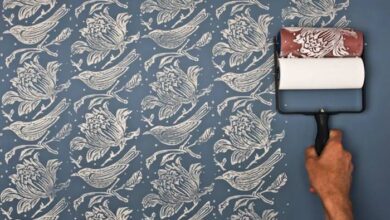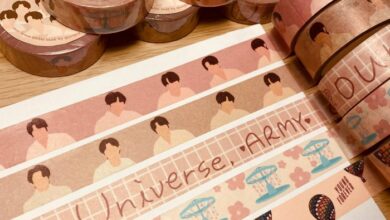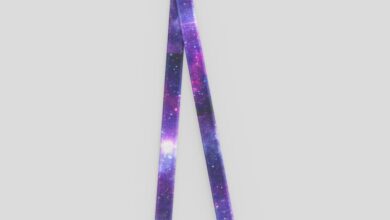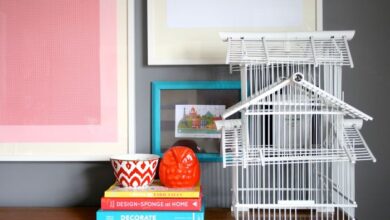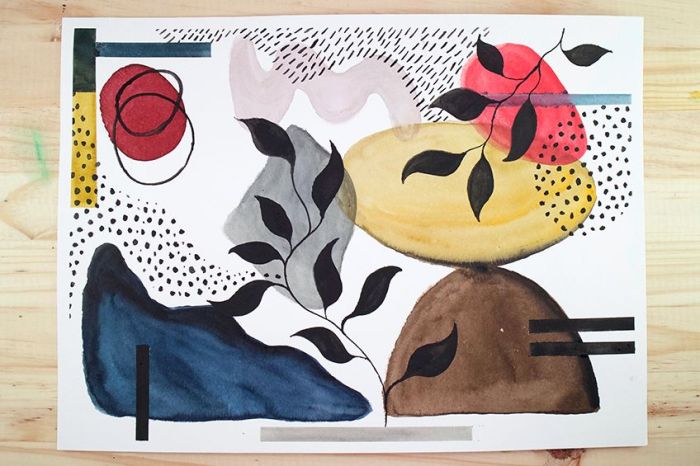
An abstract painting that anyone can make – it sounds intimidating, right? But the beauty of abstract art lies in its freedom. You don’t need any special skills or fancy equipment to create a captivating piece. All you need is a willingness to experiment, a touch of creativity, and a desire to express yourself.
Whether you’re drawn to bold colors, geometric shapes, or fluid lines, abstract art allows you to translate your emotions and thoughts onto canvas, resulting in a unique and personal masterpiece.
This article will guide you through the basics of abstract art, exploring its appeal, demystifying its principles, and providing accessible techniques that anyone can master. We’ll delve into the world of colors, shapes, and textures, and show you how to create your own abstract painting, incorporating your own unique style and personal touch.
The Allure of Abstract Art: An Abstract Painting That Anyone Can Make
Abstract art, with its absence of recognizable objects and reliance on color, form, and composition, holds a unique appeal that has captivated audiences for over a century. While some may find it perplexing or even meaningless, abstract art speaks to a deeper level of human experience, evoking emotions and interpretations that transcend the limitations of representational art.
The Emotional Impact of Abstract Art
Abstract art often elicits a profound emotional response, engaging the viewer on a visceral level. This is due to the art’s ability to tap into our subconscious and evoke feelings that we may not be able to articulate. The absence of recognizable objects allows the viewer to project their own emotions and interpretations onto the canvas.For example, the bold colors and dynamic lines of Wassily Kandinsky’s“Composition VIII” (1923) can evoke feelings of energy, movement, and even chaos.
On the other hand, the serene and contemplative nature of Mark Rothko’scolor field paintings, such as “No. 61 (Rust and Blue)” (1953), can evoke a sense of peace and tranquility.
Interpretations of Famous Abstract Paintings
Abstract art often invites multiple interpretations, depending on the viewer’s background, experiences, and personal perspectives. This open-ended nature allows for a more intimate and personal connection with the artwork.For instance, Jackson Pollock’s“Number 1, 1950” (1950), with its intricate web of splattered paint, can be interpreted as a representation of the unconscious mind, the chaos of modern life, or the vastness of the cosmos.
Sometimes the most beautiful art is born from simple, unexpected materials. Just like a splash of vibrant paint can create a captivating abstract masterpiece, a touch of gold can elevate even the most mundane objects. Think about those gourmet cheese boards you see on Pinterest – the ones with perfectly labeled cheeses that look like they came straight from a fancy deli.
Well, you can achieve that same elegant look with a little DIY magic and some gold DIY cheese labels. Just like the right brushstroke can transform a canvas, these labels can transform your cheese board into a work of art.
So, grab your paint, your labels, and let your creative spirit flow!
Similarly, Piet Mondrian’s“Composition with Red, Yellow, and Blue” (1921), with its geometric shapes and primary colors, can be seen as a celebration of order, harmony, and the essence of pure form.
Sometimes, the most captivating art is born from unexpected inspiration. Like when I was working on an abstract painting with vibrant splashes of orange, I suddenly craved something sweet and tangy. That’s when I stumbled upon a recipe for orange dark chocolate popovers – the perfect pairing for my artistic endeavor.
The contrasting textures and flavors were a delightful surprise, just like the unexpected bursts of color in my abstract creation.
Demystifying Abstract Art
Abstract art, often perceived as enigmatic and perplexing, can be understood and appreciated by anyone. It is a departure from representational art, where the focus shifts from depicting reality to exploring form, color, and composition. Abstract art invites viewers to engage with their own interpretations and emotions, making it a uniquely personal experience.
I recently discovered that creating an abstract painting is surprisingly simple, requiring only a few basic supplies and a willingness to experiment. My inspiration often comes from unexpected sources, like the vintage finds around my home , which often spark ideas for color palettes and textures.
The beauty of abstract art is that there are no rules, just the freedom to express yourself on canvas, and that’s what makes it so appealing to me.
Different Abstract Art Styles
Abstract art encompasses a diverse range of styles, each with its own unique characteristics and expressive qualities.
- Geometric Abstraction:This style, characterized by precise geometric shapes and forms, often evokes a sense of order and structure. The works of Piet Mondrian, with his use of primary colors and straight lines, are prime examples of geometric abstraction.
- Lyrical Abstraction:In contrast to geometric abstraction, lyrical abstraction embraces fluidity and expressiveness. Artists like Jackson Pollock, known for his “drip” technique, and Willem de Kooning, with his gestural brushstrokes, exemplify lyrical abstraction.
- Abstract Expressionism:This influential movement, which emerged in the mid-20th century, emphasized emotional expression and spontaneous gestures. Artists like Mark Rothko, with his large-scale canvases of vibrant color fields, and Franz Kline, with his bold black and white brushstrokes, are prominent figures in abstract expressionism.
Identifying Elements of Abstract Art
Understanding the key elements of abstract art can help in deciphering its meaning and appreciating its aesthetic qualities.
- Color:Color plays a crucial role in abstract art, conveying emotions, creating depth, and establishing visual relationships. Artists use color strategically to evoke specific feelings or create a sense of balance and harmony.
- Shape:Abstract artists use shapes to explore form and composition. Shapes can be geometric, organic, or free-flowing, each contributing to the overall visual impact of the artwork.
- Texture:Texture adds another layer of depth and interest to abstract art. Artists use different techniques, such as impasto (thick paint application), to create tactile surfaces that engage the viewer’s senses.
Accessible Abstract Art Techniques
Abstract art can be a powerful and expressive form of art, and it’s something anyone can create. You don’t need years of training or expensive materials to make beautiful abstract paintings. With a few simple supplies and a little bit of experimentation, you can create your own unique abstract masterpieces.
Creating a Simple Abstract Painting
To create a simple abstract painting, you’ll need a few basic supplies:
- Canvas (any size will do)
- Acrylic paints (choose a few colors that you like)
- Brushes (different sizes and shapes)
- Palette knife (optional)
- Water
Once you have your supplies, you can start painting. There’s no right or wrong way to create abstract art, so feel free to experiment and let your creativity flow. Here’s a step-by-step guide to create a simple abstract painting:
- Start by sketching a rough Artikel of your design on the canvas. You can use a pencil or charcoal to create a light Artikel.
- Next, begin to apply your paint. You can use a brush, a palette knife, or even your fingers to apply the paint. Try different techniques, like layering colors, creating textures, or using bold strokes.
- As you work, don’t be afraid to experiment with different colors and techniques. You can even add water to your paint to create different effects.
- Once you’re happy with your painting, let it dry completely before adding any finishing touches.
Using Everyday Objects as Tools
Everyday objects can be used as tools for creating abstract art. Here are some examples:
- Sponges:Sponges can be used to create interesting textures and patterns in your paintings. You can use a dry sponge to create a blotchy effect, or you can use a wet sponge to create a more blended effect.
- Toothbrushes:Toothbrushes can be used to create splatter effects. Dip a toothbrush into paint and then run your finger across the bristles to create a splatter effect.
- Plastic Wrap:Plastic wrap can be used to create interesting textures and patterns in your paintings. Simply lay a piece of plastic wrap over your wet paint and then carefully remove it to reveal the unique pattern.
- Straws:Straws can be used to create interesting textures and patterns in your paintings. You can blow air through a straw to create a splatter effect, or you can use a straw to create lines and swirls.
Incorporating Personal Experiences and Emotions
Your abstract art can be a reflection of your own personal experiences and emotions. Here are some tips for incorporating your personal experiences and emotions into your abstract art:
- Think about your emotions:What are you feeling? What colors, shapes, and textures come to mind when you think about these emotions?
- Use your experiences as inspiration:What are some of the most memorable events in your life? What colors, shapes, and textures do these events evoke?
- Don’t be afraid to experiment:Abstract art is all about experimentation. Try different colors, shapes, and textures to see what works best for you.
- Let your creativity flow:There’s no right or wrong way to create abstract art. Just relax, have fun, and let your creativity flow.
Abstract Art for Everyone

Abstract art, often perceived as enigmatic and exclusive, is actually a liberating art form that welcomes everyone. It’s about expressing emotions, thoughts, and experiences through colors, shapes, and textures, without the constraints of realistic representation.
Abstract Art Materials and Techniques
Understanding the materials and techniques used in abstract art opens up a world of creative possibilities.
| Materials | Techniques | Inspiration | Tips |
|---|---|---|---|
| Acrylic paints | Dripping, layering, splattering, pouring | Nature, emotions, music, dreams | Experiment with different paint consistencies |
| Watercolors | Blending, layering, washes | Landscapes, skies, water | Allow for unexpected effects |
| Oil paints | Impasto, glazing, scumbling | Light, shadows, textures | Use a palette knife for unique textures |
| Ink | Brushstrokes, splattering, calligraphy | Words, symbols, patterns | Experiment with different ink densities |
| Collage | Assembling, layering, cutting | Found objects, textures, patterns | Use contrasting materials for visual interest |
Illustrative Process of Abstract Painting, An abstract painting that anyone can make
Imagine a blank canvas, a fresh start. You choose a vibrant blue acrylic paint, the color of a summer sky. You dip your brush into the paint, letting it flow onto the canvas in long, sweeping strokes, evoking a sense of freedom and movement.
Then, you switch to a smaller brush, using white paint to create delicate swirls and dots, adding a touch of light and energy. Next, you grab a palette knife and apply thick, textured strokes of yellow, reminiscent of the warmth of the sun.
You continue layering colors, shapes, and textures, each addition contributing to the evolving abstract composition. As you work, you allow your emotions and intuition to guide your hand, creating a unique and personal expression.
Inspiring Abstract Art Quotes
“The essential thing is to be aware of the beauty that surrounds us every day.”
John Cage
This quote emphasizes the importance of observation and appreciating the beauty that exists in the everyday world, which can serve as inspiration for abstract art.
“Art is not a mirror held up to reality, but a hammer with which to shape it.”
Bertolt Brecht
Brecht’s quote highlights the transformative power of art, suggesting that abstract art can be used to challenge and reshape our understanding of the world.
“Abstract art is not about what you see, but what you feel.”
Wassily Kandinsky
Kandinsky’s quote emphasizes the subjective nature of abstract art, where emotions and feelings take precedence over realistic representation.

